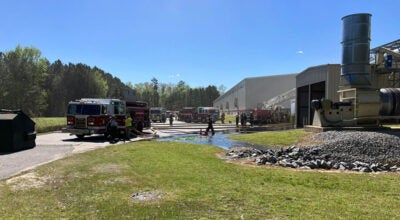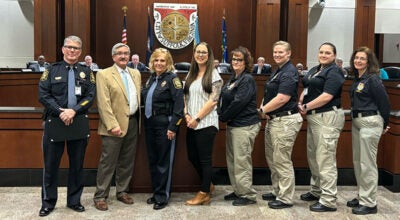City’s most dangerous intersection is …
Published 9:48 pm Saturday, September 28, 2013
Despite a recent focus on Pruden Boulevard after two deadly crashes there this year, none of the intersections along the highway is anywhere close to being the most dangerous intersection in Suffolk.
That dubious distinction belongs to the relatively low-speed and stoplight-controlled intersection of Portsmouth Boulevard, Nansemond Parkway and East Washington Street, according to a draft version of the 2013 Hampton Roads Regional Safety Study conducted by the Hampton Roads Transportation Planning Organization.
Following closely behind are the intersection of Bennetts Pasture Road and Kings Highway and the intersection of Godwin Boulevard and Kings Fork Road, both of which also are controlled by stoplights.
The organization calculated the “crash severity rate” of each intersection for the years 2009 through 2012 using the average daily vehicles that use the intersection and the number of crashes. Wrecks that resulted in injuries were weighted higher than those that resulted in property damage only, and accidents that caused deaths were weighted higher still.
The Portsmouth/Nansemond/Washington intersection also came in second for the highest number of crashes in the city during the same time period. The intersection of North Main Street and Constance Road had the highest number, and the juncture of Bridge Road and College Drive was third in that measurement.
Police Chief Thomas Bennett said the intersections that rank high in the number of crashes mostly have high volumes of traffic and are especially busy during rush hour. Impatience during rush hour causes many of the crashes, he noted.
The most dangerous stretch of highway in Suffolk is, again, not Pruden Boulevard, but rather Interstate 664 northbound between Bridge Road and the Western Freeway, according to the report.
The report also revealed Suffolk was fourth-highest in the 16-locality region for its average annual fatalities for the years 2010-2012. The city saw an average of 12.7 traffic deaths each of those years.
Bennett attributed Suffolk’s ranking to its high number of high-speed roads, which more urban cities do not have.
The number of fatalities in the city rose 50 percent from 2003 to 2012, but 2003’s eight traffic deaths was a 20-year low. Last year saw 12 deaths on the city’s roads, a more typical number.
“The higher the speed, the higher the number of deaths,” he said.
The report also carried some good news for Suffolk, though. In the last 10 years, the number of accidents in the city has decreased by 7 percent, and the number of injuries from traffic accidents dropped 6 percent.
Bennett attributed the decreased number of crashes to safer cars.
“Just about all cars now have anti-lock brakes,” he noted.
Airbags and advancements in emergency medical services also have helped decrease injury severity and helped improve patient recovery, he said.






